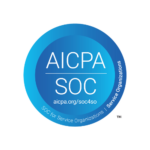
GOBEL Subject Matter Expert Blog: Getting Real about Annual Giving
By Ann Fisher
Director of Annual Giving, Leadership Annual Giving and Data Services, Michigan Medicine
In all my years working in annual giving, I have found some common misconceptions about the field. In this blog I want to address why these misconceptions exist, what some of them are, and how annual giving really works.
First, I want to start with the “why.” I have found most misconceptions about annual giving come from our colleagues. It could be faculty, major gift officers, volunteers, or even leadership. They will often give you guidance, solicited or not, as to how to run your annual giving efforts. The problem is that many of these well-intentioned individuals do not have any experience in annual giving. They often base their feedback on one of two things, either their own personal opinions or on the donors they work with directly. While running your program on opinion is obviously not the way to success, one would think that basing our efforts on direct feedback from donors would be a logical approach. I argue that it isn’t, simply because the donors they work with are different. Our colleagues are working with major gift donors and these individuals have vastly different needs and expectations around their giving to our organizations. Trying to apply the same guidelines on how we approach our annual giving donors would be a mistake.
So, what are the some of these misconceptions? Let’s break them down.
- The letter must always be signed by the head of your organization. The truth is unless you have a leader with high name recognition and likeability, the signer doesn’t often matter. It could be a donor, volunteer, even you. It is often time consuming to get leaders to sign off on letters, and they tend to modify copy, sometimes to the determent of a well-crafted piece. Data shows that you don’t even need a signer at all. Statement pieces with brief, unsigned copy have statistically proven time and again they work, and are much easier to produce. I am not suggesting to completely skip letters, but I would recommend using them when you have time for approvals and can get the most return for your added effort.
- Donors want to restrict their giving. Some donors will make an initial gift to something they are particularly passionate about, and that’s great. It can be an early indicator of higher interest in your organization. However, for many of your annual givers, unrestricted giving is perfect for their early giving. Restricted giving can be used later, as their relationship to your organization builds, to encourage increased giving as you find their passion. The key to unrestricted giving is being able to articulate the impact of their giving to these donors.
- The most important part of an email is the copy. We spend most of our time developing the body copy of our email appeals, but the subject line and sender are often afterthoughts. Think about your personal email inbox. Likely many of your emails never get opened. What triggers you to open an email? It’s probably the sender or the subject line. You should spend as much time thinking about these as you do the body copy of your emails if you want your email appeals to be read. There are lots of articles and information out there about how to construct successful emails, I encourage you to do a bit of research before your next email appeal.
- Mail has the best ROI, so mail everyone. Mail is a great channel, particularly for those donors who have always given through mail. It is not a particularly effective tool for engaging new donors, particularly younger people. The hassle of writing a check and finding a stamp, then dropping it in the mailbox, is more time consuming than popping online to make a gift. I am not suggesting you should never try to acquire new donors via physical mail, just that you should be very strategic about it and know the ROI will be low. For many organizations, new donors are being acquired through events, online giving, or calling efforts. It is also important to note that donors rarely switch channels of giving, so if they start out giving online or because of an event, they aren’t likely to give to you through the mail just because you start mailing to them. Avoid that temptation to just throw them into your mailings.
- Text is too personal, nobody likes it. I should start by saying I am not referring to the auto text your doctor’s office sends you about an upcoming appointment. I am talking about P2P or person-to-person texting, where you can have a conversation, which is a different kind of texting system. I believe that P2P texting is a great tool, for the right audience. I do not recommend using text messaging for nondonors or long-lapsed donors. Limit use to your more current donors who have a closer connection to your organization. Texting does feel personal, and the best part about it is that the open rate is well over 80 percent, whereas open rates for email can very but run closer to 50 percent. Texting for giving to events, year-end giving texts, or personal texts from gift officers can be great ways to utilize this platform effectively.
- Phone is dead, and everyone hated it anyhow. I don’t think anything ever dies in annual giving, we just evolve, and that is true of calling programs. There is still a place for phone. As I said earlier, donors do not often switch giving channels, so if you acquired them through phone, then that is the best way to retain them. Phone is still one of the better tools for acquisition as well. Although it is more expensive, it is still more personal than email or mail. As for donors hating it, I know some do, but I have also listened in on calls where donors will happily chat away with a caller. Just because it isn’t for everyone, doesn’t mean it is not an effective tool for some donors. We need not give up on the phone, but rather find new ways to maximize its results.
- You ask too often. I am ending with this one, which is my favorite annual giving misconception. I cannot tell you how often some dean, chair, VP, or gift officer has suggested to me that we are sending out too many appeals. While I am sure there are some organizations where this may be true, most are under solicitating. We need to remember that annual giving is a form of marketing, and the marketing rules are that you need to get your message out about 5-7 times to have it be recognized. What seems like a lot to us, is often the reverse to our donors. They may not open half our emails. Their spouse may have thrown our mail appeal in the garbage. They may not have picked up the phone when the caller tried to contact them. We see all the messages, the donor rarely does. And yes, we may occasionally hear from a grumpy donor, but unless you are hearing a high volume of complaints, I would not alter your appeal plans. We are dealing with very large volumes of people, so it is a reality of our work that sometimes we will make someone unhappy.
If you have been in annual giving for any length of time, I am sure you have heard some of these misconceptions coming from leadership and colleagues. I hope I have offered information that will help you have better conversations with them to help them understand how annual giving really works. I also encourage you to find and use data, either from benchmarking or your own organization, to support you in these conversations. It can be frustrating to when others tell us what to do, but we need to view it as an opportunity to educate them on our unique form of fundraising.
ABOUT GOBEL SUBJECT MATTER EXPERTS: GOBEL Subject Matter Experts are healthcare philanthropy professionals working in some of the top shops in the country, sharing best practices and insights. For more information about GOBEL’s Subject Matter Expert program, or to suggest a topic for coverage, email erezsnyak@gobelgroup.com.
ABOUT THE AUTHOR: Ann Fisher is a fundraising professional with more than 25 years of experience in annual giving. Ann began her career at Hospice of Michigan where she developed numerous skills from data base management to grant and appeals writing. From there she moved on to University of Detroit Mercy where she spend nearly 20 years in annual giving, eventually becoming their Executive Director of Annual Giving and Data Services. During her time at Detroit Mercy, Ann was instrumental in introducing new initiatives like online giving and crowdfunding while also improving the ROI in phone and mail and coordinating the University’s President’s Cabinet leadership giving program. Ann then spent two years at UC San Diego as Senior Director of Integrated Marketing, where she launched their first Day of Giving and restarted their grateful patient giving program. Ann currently works at Michigan Medicine where she serves as Director of Annual Giving, Leadership Annual Giving and Data Services. In 2021 Ann and her colleagues were selected as CASE Platinum Award Finalists in the Best Practices in Fundraising Award for their Nurses Week Campaign, which raised over $80,000 from 1,300 donors during the height of the pandemic. She has also served as a judge for the CASE Circle of Excellence Awards. In her spare time, Ann is an avid runner and has run several half and full marathons as a charity runner to raise money for various causes.

